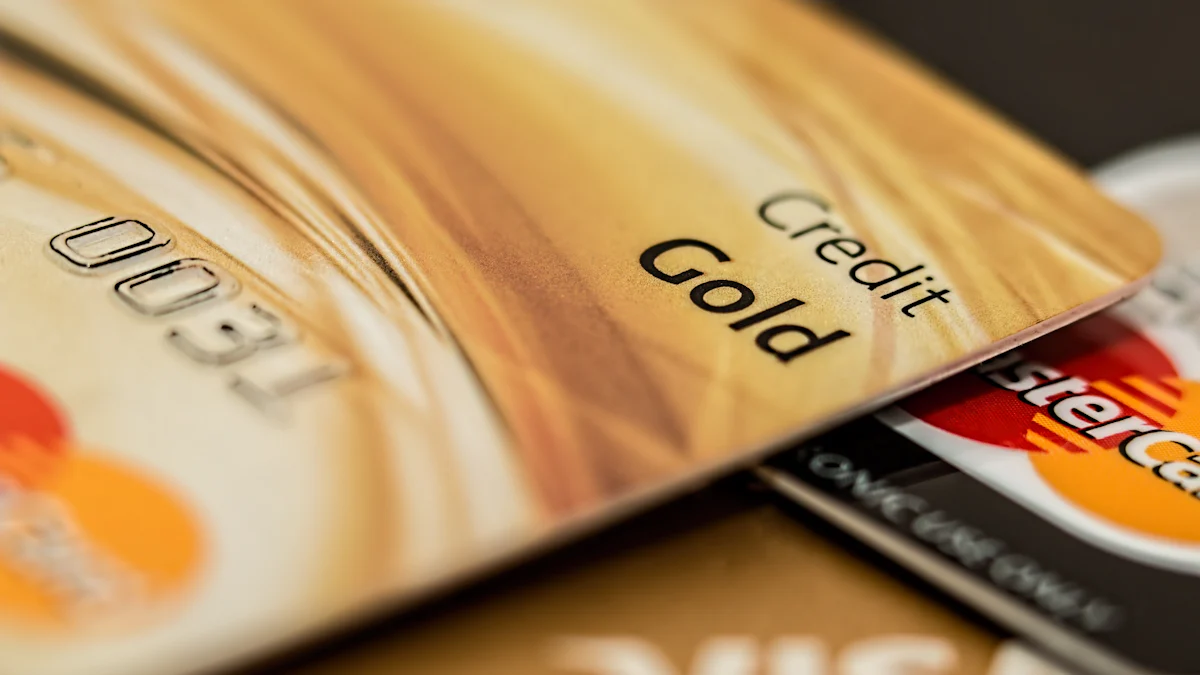How Credit Card Protections Shield You from Fraud

Credit card protections help you combat fraud and safeguard your finances. These protections address common threats like card-not-present fraud, account takeovers, and skimming. In 2021, credit card fraud caused $181 million in losses. With tools like fraud monitoring and zero liability policies, you can shop confidently and resolve issues quickly when problems arise.
What Are Credit Card Protections?
Credit card protections are designed to safeguard your finances and provide peace of mind when using your card. These protections include features like fraud monitoring, purchase protection, and zero liability policies. Understanding how these work can help you make the most of your credit card benefits.
Understanding Credit Card Fraud Protection
Credit card fraud protection shields you from unauthorized transactions. Fraud monitoring systems use advanced techniques to detect suspicious activity. Here’s how they work:
Technique | Description |
|---|---|
Anomaly Detection | Identifies transactions that deviate from standard patterns or exceed predefined thresholds. |
Real-Time Analysis | Monitors transactions as they occur to catch anomalies immediately. |
Behavioral Analysis | Compares current transactions to your historical spending patterns. |
Machine Learning | Adapts to new fraud patterns over time to predict and prevent fraud. |
Customer Risk Profiling | Focuses monitoring on high-risk individuals and transactions. |
Alert Generation | Sends alerts based on risk scores assigned to transactions. |
These systems ensure that any unusual activity is flagged promptly, allowing you to act quickly.
Exploring Credit Card Purchase Protection
Credit card purchase protection, often part of a payment protection plan, covers eligible items against theft or damage. Commonly covered items include:
Clothing
Electronics
Home and garden products
Personal care items
This robust purchase protection typically applies for a limited time after purchase, as outlined in your credit card terms and conditions. Always review these terms to understand what’s covered and how to file a claim.
The Role of Zero Liability Policies
Zero liability policies ensure you aren’t held responsible for unauthorized charges made without your consent. All major credit card issuers, including Visa, MasterCard, Discover, and American Express, offer this protection. To qualify, you must:
Use reasonable care to protect your card from loss or theft.
Report any loss or theft to your credit card issuer promptly.
These policies, governed by credit card consumer protections, provide a safety net, allowing you to shop with confidence.
How Credit Card Purchase Protection Works

Coverage for Theft and Damage
Credit card purchase protection offers coverage for eligible items that are stolen or damaged shortly after purchase. This benefit typically applies to items like electronics, clothing, and home goods. However, it’s important to know what is not covered. For example, perishables, motor vehicles, and items bought for resale are usually excluded.
Exclusion Type | Description |
|---|---|
Perishables | Food, drinks, and other consumables. |
Used items | Pre-owned or refurbished products often aren’t covered. |
Motor vehicles | Cars, motorcycles, boats, and similar items typically aren’t eligible. |
Intentional damage | Damage caused intentionally by the cardholder is not covered. |
Items bought for resale | Products intended for resale are usually excluded. |
Understanding what is covered by purchase protection and what is not covered helps you avoid surprises when filing a claim.
Time Limits and Claim Conditions
Credit card purchase protection comes with specific time limits and conditions. Most issuers require you to report theft or damage within 30 to 90 days of the purchase date. Failing to act within this window can result in a denied claim. Additionally, you must provide adequate documentation, such as receipts, credit card statements, and evidence of the damage or theft. Always review your card’s terms to understand these conditions fully.
How to File a Purchase Protection Claim
Filing a purchase protection claim involves a few straightforward steps. First, gather all necessary documentation, including your receipt, credit card statement, and details of the damage or theft. Then, contact your card issuer to initiate the claim process. Follow these steps to ensure a smooth experience:
Notify your card issuer within the required timeframe (usually 30 days).
Submit the required documentation, such as receipts and proof of damage or theft.
Complete the claim form provided by your issuer.
Wait for the issuer to review your claim.
Receive reimbursement if your claim is approved.
Keep in mind that claims may be denied for reasons like late reporting, inadequate documentation, or coverage exclusions. Acting promptly and providing accurate information increases your chances of approval.
Steps to Take If You Encounter Fraud

Reporting Unauthorized Charges
When you notice unauthorized charges on your credit card, act quickly to minimize potential losses. Follow these steps to report the issue effectively:
Contact your card issuer immediately using the number on the back of your card.
Provide details about the unauthorized charges, including the amount and date.
Share any additional information you have, such as the merchant name or location.
Prompt reporting ensures your card issuer can freeze your account and prevent further fraudulent activity. Most issuers will guide you through disputing credit card charges and may issue a temporary credit while they investigate.
Following Up on Fraud Investigations
After reporting fraud, stay engaged in the investigation process. Credit card companies often resolve cases within a few days to several weeks, depending on the complexity. However, some cases, especially those involving chargebacks, can take up to 90 days or longer if the merchant disputes the claim. This process, known as representment, requires the bank to review new evidence and reassess the case.
To ensure a smooth resolution, keep all communication records with your card issuer. Regularly check the status of your claim and provide any additional documentation they request. Once the investigation concludes, you may receive reimbursement for the disputed charges if the claim is approved.
Preventing Future Fraud with Best Practices
Protecting yourself from future fraud requires vigilance and proactive measures. Implement these best practices to safeguard your credit card information:
Monitor your accounts regularly for suspicious transactions.
Sign up for fraud alerts to receive notifications of unusual activity.
Avoid saving your credit card details on websites to reduce risks during data breaches.
Be cautious of phishing scams and verify sources before sharing sensitive information.
Use secure websites and avoid making transactions on public Wi-Fi.
Review your credit reports periodically to spot unfamiliar accounts.
By following these steps, you can strengthen your defenses against fraud and make the most of your payment protection plan.
Tips to Maximize Your Credit Card Protections
Regularly Review Your Statements
Reviewing your credit card statements regularly is one of the simplest ways to protect yourself from fraud. By checking your transactions, you can quickly spot unauthorized charges or errors. Make it a habit to review your statements at least once a week. Look for unfamiliar merchant names, duplicate charges, or amounts that don’t match your receipts.
Tip: Use your card issuer’s mobile app to monitor transactions in real-time. This allows you to catch suspicious activity before it escalates.
If you notice any discrepancies, report them immediately to your card issuer. Acting quickly ensures that your payment protection plan works effectively to resolve the issue.
Enable Fraud Alerts and Notifications
Fraud alerts and notifications provide an extra layer of security for your credit card. These alerts notify you of unusual activity, such as large purchases or transactions made in unfamiliar locations. Without fraud alerts, you may not realize that someone is misusing your card until it’s too late.
Fraud alerts reduce the risk of identity theft by adding verification steps for suspicious transactions.
They help you stay informed about unauthorized attempts to open accounts in your name.
Alerts also allow you to act quickly, minimizing potential financial losses.
Note: Most credit card issuers offer fraud alerts for free. Check your account settings to enable them today.
By enabling these alerts, you can strengthen your payment protection plan and stay ahead of potential threats.
Use Virtual Credit Card Numbers for Online Transactions
Virtual credit card numbers are a powerful tool for securing online purchases. These temporary numbers link to your actual credit card but keep your real information hidden. Here’s how they enhance your security:
Each virtual card generates a unique number for every transaction, protecting your real card details.
Merchant-locked cards work only with specific vendors, reducing the risk of misuse.
Single-use cards deactivate after one transaction, making them useless to thieves.
Did you know? If a virtual card number is compromised, you can deactivate it without affecting your main account. This minimizes the risk of fraud and ensures your payment protection plan remains intact.
However, virtual cards have limitations. They are typically restricted to online or phone transactions. Refunds can also be tricky if the virtual number expires before the refund is processed. Despite these drawbacks, virtual cards are an excellent way to protect yourself when shopping online.
Credit card protections play a vital role in keeping your finances safe from fraud and theft. By learning how these protections work, you can take full advantage of their benefits. When choosing a credit card, consider these factors:
Match the card to your spending habits and travel goals.
Review terms for claim limits, coverage duration, and exclusions.
Look for extra benefits like travel insurance and purchase protections.
Staying vigilant and selecting a card with strong protections ensures a secure and worry-free experience.

